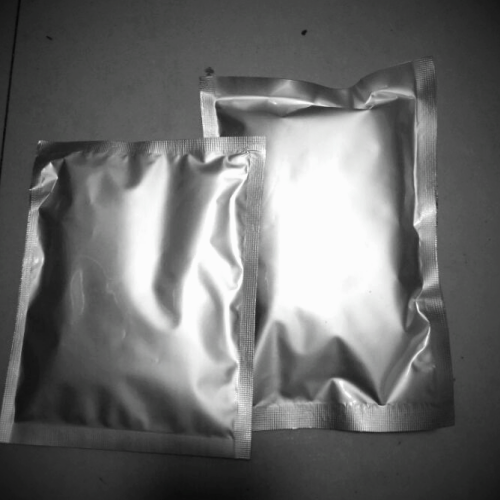Buy USP38 Cabergoline (Caber) Powder Raw High prolactin drugs Amine antagonists Bodybuilding Online CAS 81409-90-7
What is Cabergoline?
Cabergoline is a dopamine receptor agonist. It works by reducing the amount of prolactin (a hormone) that is released from the pituitary gland.
Cabergoline is a white powder soluble in ethyl alcohol, chloroform, and N, N-dimethylformamide (DMF); slightly soluble in 0.1N hydrochloric acid; very slightly soluble in n-hexane; and insoluble in water.
Cabergoline Basic information
Product Name: Cabergoline
Synonyms: 6-allyl-n-[3-(dimethylamino)propyl]-n-(ethylcarbamoyl)ergoline-8-carboxamide;CABERGOLINE;(8-beta)-(2-propenyl);n-(3-(dimethylamino)propyl)-n-((ethylamino)carbonyl)-6-ergoline-8-carboxamid;FCE-21336,Cabaser,Dostinex;(8b)-N-[3-(Dimethylamino)propyl]-N-[(ethylamino)carbonyl]-6-(2-propen-1-yl)- ergoline-8-carboxamide;Cabaser;Dostine
CAS: 81409-90-7
MF: C26H37N5O2
MW: 451.6
EINECS:
Product Categories: Intermediates & Fine Chemicals;Neurochemicals;Pharmaceuticals;API
Mol File: 81409-90-7.mol
Cabergoline Certificate of Analysis
| Product name |
Cabergoline |
| CAS No. |
81409-90-7 |
Outer Packing |
1kg/bag |
| Production date |
15th Jan 2018 |
Shelf life |
14th Jan 2020 |
| Standard adopted |
EP7.0/USP38 standard |
| Item |
Specifications |
Results |
| Description |
White or almost white crystalline powder |
Conform |
|
Identity |
1,IR complies |
Conform |
| 2,X-Ray complies |
Conform |
| 3,HPLC complies |
Conform |
| Optical rotation |
-77.0 C~-83.0 C |
-78.0 C |
| Loss on drying |
Not more than 0.5% |
0.32% |
| Related substances |
1,Cabergolin Imp A no more than0.15% |
0.05% |
| 2,Allylamide no more than 0.10% |
0.03% |
| 3,Allyl DHLA no more than 0.15% |
0.06% |
| 4,Cabergoline oxide no more than 0.10% |
0.04% |
| 5,Other impurities individually no more than 0.10% |
0.03% |
| 6,Total no more than 0.50% |
0.21% |
| Assay(HPLC) |
98.0%~102.0%(recalculated on anhydrous basis) |
99.4% |
|
Residual solvents |
1,Dichloromethane no more than 100ppm |
15ppm |
| 2,Acetone no more than 200ppm |
15ppm |
| 3,Tert-butylmethylether no more than 200ppm |
11ppm |
| 4,Xylene no more than 1500ppm |
135ppm |
| 5,Heptane no more than 1000ppm |
20ppm |
| Residue on ignition |
No more than0.10% |
0.03% |
| Heavy metals |
No more than 20ppm |
1ppm |
| Particle size |
90% of particles no more than 80um |
Conform |
| Bulk density |
0.20~0.35g/cm3 |
0.33g/cm3 |
| Conclusion |
The results conforms with EP7.0/USP38 standard. |
Cabergoline Application
Cabergoline is used to treat hyperprolactinemia (high levels of prolactin, a natural substance that helps breast-feeding women produce milk but can cause symptoms such as infertility, sexual problems, and bone loss in women who are not breast-feeding or men). Cabergoline is in a class of medications called dopamine receptor agonists. It works by decreasing the amount of prolactin in the body.
It works by stopping the brain from making and releasing the prolactin hormone from the pituitary gland. Cabergoline use is usually stopped when prolactin levels are normal for 6 months. It may be given again if symptoms of too much prolactin occur again.
Cabergoline oral dosage form (tablets):
For disorders of high prolactin levels or pituitary tumors:
Adults—At first, 0.25 milligram (mg) two times a week. Your doctor may increase your dose every 4 weeks as needed, according to body prolactin levels, up to 1 mg two times a week.
Children—Use and dose must be determined by the doctor.
Cabergoline Side Effects
Signs of an allergic reaction, like rash; hives; itching; red, swollen, blistered, or peeling skin with or without fever; wheezing; tightness in the chest or throat; trouble breathing or talking; unusual hoarseness; or swelling of the mouth, face, lips, tongue, or throat.
Signs of kidney problems like unable to pass urine, change in how much urine is passed, blood in the urine, or a big weight gain.
Weakness on 1 side of the body, trouble speaking or thinking, change in balance, drooping on one side of the face, or blurred eyesight.
Shortness of breath, a big weight gain, or swelling in the arms or legs.
Chest pain.
Cough that does not go away.
Very bad dizziness or passing out.
Change in the way you act.
Strong urges that are hard to control (such as eating, gambling, sex, or spending money).
Back pain.
Belly pain.
Very bad headache.
Seizures.


